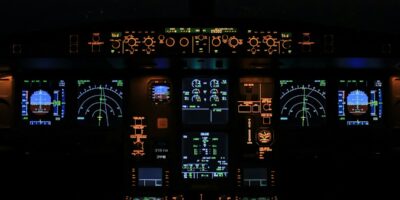x59
Understanding the x59: The Future of Aviation
The x59 is an experimental aircraft developed by NASA. It is also referred to as the QueSST (Quiet SuperSonic Technology). The primary goal of this project is to reduce the noise associated with sonic booms.
The Need for the x59
Sonic booms have been a significant issue in supersonic flight. These loud and often startling noises occur when an aircraft surpasses the speed of sound. This has limited supersonic flight over land due to noise regulations. Residents have experienced these booms as disruptive, leading to the ban on overland supersonic flights since the 1970s.
Design and Features
The x59 features a unique design to mitigate noise. Key design choices include its elongated nose and the placement of its engines. These modifications help in shaping the shockwaves to produce a quieter thump rather than a boom.
- Elongated Nose: This design helps in gradually increasing pressure around the aircraft, reducing the intensity of the sonic boom.
- Engine Placement: Engines are placed above the fuselage to minimize noise reaching the ground.
- Wing Design: Specially designed wings help in managing shockwaves efficiently.
Purpose and Goals
NASA aims to gather data on the x59’s performance. The data collected will help in creating new international standards for low-noise supersonic flight. This could pave the way for commercial supersonic travel over land. The insights gained will also assist in designing quieter aircraft in the future.
Flight Testing
Flight testing of the x59 is critical. The aircraft will first undergo tests to ensure safety and performance. These tests will be conducted at NASA’s Armstrong Flight Research Center. After initial testing, the x59 will fly over several U.S. communities to measure public perception of the noise level. These community tests aim to validate that the aircraft produces a less intrusive sound.
Technological Innovations
Shape Modifications
In contrast to conventional supersonic jets, the x59 has a carefully crafted shape. This shape alters how sonic waves form and travel. By controlling the aircraft’s contours, engineers can reduce the sharpness and intensity of the sonic boom.
Avionics and Control Systems
The x59 boasts advanced avionics. These systems manage stability and control, ensuring precise handling during supersonic flight. The flight control system adjusts the aircraft’s surfaces to maintain the right balance and prevent turbulence.
Material Science
The materials used in the x59 are significant. Engineers selected lightweight and durable composites to construct the aircraft. These materials not only reduce weight but also contribute to the overall aerodynamic efficiency.
Economic Impact and Future Implications
The success of the x59 could revolutionize air travel. Quieter supersonic flights would shorten travel times drastically. This could lead to significant economic benefits. Businesses could expand, and cross-continental travel might become more common. Additionally, other aircraft manufacturers could adopt the technologies developed for the x59, setting new standards in aerospace design.
Environmental Considerations
While the x59 aims to reduce noise pollution, other environmental impacts remain a concern. Supersonic flights consume more fuel than subsonic counterparts. However, NASA is also exploring fuel efficiency improvements. The ultimate goal is to balance speed with environmental responsibility. Researchers are studying alternate fuels and propulsion systems to minimize the carbon footprint.
Collaboration and Partnerships
The x59 project involves collaboration between NASA and industry partners. These partnerships leverage expertise from various fields. Companies like Lockheed Martin play a crucial role. They bring in advanced engineering capabilities and innovative thinking. Such collaborations ensure the project’s success and foster industry growth.
Public Perception and Acceptance
Public acceptance of the x59 will be crucial. The community flight tests will provide valuable insights. Residents’ feedback will help in refining designs and strategies. Achieving lower noise without compromising on speed will be a key factor in gaining widespread acceptance.
Regulatory Changes
The success of the x59 could lead to changes in aviation regulations. Current rules prohibit supersonic flights over land. The data from x59 tests may influence policymakers to revise these regulations. This could open new commercial opportunities for airlines and manufacturers alike.
Educational and Inspirational Value
The x59 project has educational significance. It inspires new generations of engineers and scientists. Schools and universities can use this project as a case study in innovation and problem-solving. The project demonstrates how engineering advancements can address real-world challenges.
Projected Timeline
- Design and Construction: The initial phase focused on designing and constructing the aircraft. Achieving the right balance between noise reduction and aerodynamic performance was key.
- Testing Phases: Safety and functionality tests at NASA’s Armstrong Flight Research Center. Ensuring the aircraft meets all performance criteria before community testing.
- Community Overflights: Conducting tests over selected U.S. communities to measure public responses to noise levels.
- Data Analysis: Analyzing community feedback and technical data to refine designs and strategies.
- Regulatory Considerations: Influencing regulatory bodies with data to support changes in aviation laws.
- Commercial Application: Preparing for potential commercial uses of the technology in future aviation projects.
Conclusion
The x59 represents a considerable step forward in aviation technology. Its success could shape the future of air travel, making supersonic flights viable and less intrusive. By addressing the issues of noise and environmental impact, the x59 aims to make a lasting impression on the aviation industry.




Subscribe for Updates
Get the latest articles delivered to your inbox.
We respect your privacy. Unsubscribe anytime.